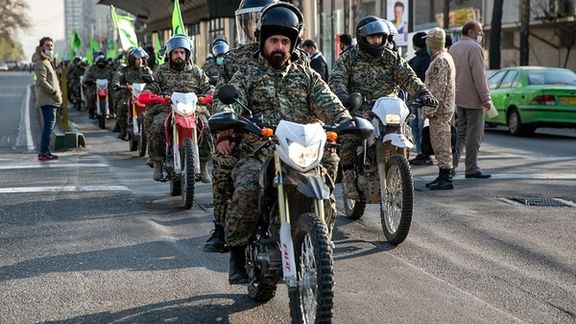Iran holds massive military drill to counter perceived threats to Tehran

On Friday, the Tehran division of the Islamic Revolutionary Guard Corps (IRGC) is set to hold a military exercise involving 110,000 paramilitary Basij forces. According to an IRGC spokesperson, the drill is designed to prepare for any potential threats against the capital.
This raises the question: what kind of threat does Tehran face to justify such a large-scale exercise?
If we assume the drill is not aimed at countering an internal coup against the IRGC itself, only two other scenarios remain: an external ground invasion or an internal armed group - or a popular uprising in Tehran against the government.
External invasion or internal armed group
Evidence suggests that the possibility of an external ground invasion targeting Tehran is entirely ruled out. Neither the US nor Israel has the logistical capabilities or preparedness for such an attack.
US military personnel in the Middle East number fewer than 50,000, and Israel lacks the geographical and logistical resources to carry out such an operation nearly 2,000 kilometers from its borders. Similarly, there is no known internal armed group with the capability or plans to attack Tehran.
Uprising of Tehran’s population against the government
With external or internal armed attacks ruled out, the remaining concern is the fear of a popular uprising. By announcing the involvement of 110,000 Basij forces, the IRGC spokesperson has implicitly acknowledged the seriousness of this threat.
This exercise appears to be a drill aimed at countering widespread public protests that could threaten critical government institutions.
The timing of the drill coincides with political shifts in the US, including the return of Donald Trump to the White House, and a weakening of Tehran’s regional position, which have raised concerns within the Islamic Republic’s ruling circles.
As the entity responsible for securing Tehran and sensitive government sites, the IRGC fears that any external attack, if it occurs, could coincide with internal unrest, potentially leading to the collapse of the government.
Basij forces were heavily deployed during the 2019 and 2022 protests, where they were accused of killing hundreds of citizens and arresting thousands.
Signs of government fear
Description of the threat: The IRGC spokesperson described the threat as "man-made," a clear reference to urban uprisings.
Similar drills: Just two months ago, a similar exercise took place near Tehran in Telo Road and the IRGC's Al-Mohammad Security Brigade headquarters, focusing on suppressing urban protests.
Lessons from Assad’s fall: The sudden collapse of Bashar al-Assad's government in Syria has deeply unsettled the Islamic Republic’s leaders. They fear a similar fate, particularly given the widespread public discontent and anger.
Economic crises: Concerns over the steep fall of the Iranian rial, the resulting economic repercussions, and the possibility of public uprisings if the government raises gasoline prices in the coming months are fueling these fears. An economic collapse could ignite widespread protests.
A reflection of deep-seated fear
These drills reflect the Islamic Republic’s profound fear of a popular uprising.
The publicized figure of 110,000 Basij forces is likely aimed at projecting large-scale strength and boosting morale within government ranks.
However, the reality remains that the primary threat to the Islamic Republic does not come from external borders but from the streets of Tehran and other Iranian cities.